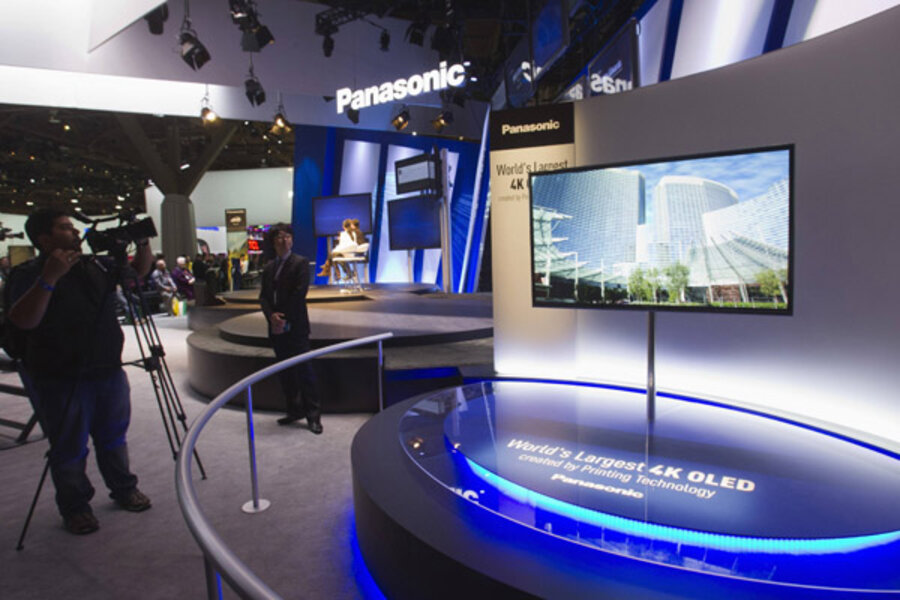CES 2013: Panasonic unveils 56-inch OLED TV
Loading...
| LAS VEGAS
Panasonic Corp, in a display of technological one-upmanship with its South Korean rivals, unveiled a prototype of the world's largest OLED screen on Tuesday.
The half-inch thick, 56-inch television, based on organic light-emitting diode technology, is a mere inch bigger than ones offered up by Samsung Electronics and LG Electronics a year ago in Las Vegas. The technology in theory allows for thinner screens that consume less power.
Japan's Sony Corp, which is cooperating with Panasonic in OLED technology, on Monday unwrapped its own 56-inch ultra high-definition model.
Sony on Monday also said it will widen its range of ultra high-definition LCD sets to three this year, as it stakes out its territory in next-generation TVs.
LG, which has started to take orders for its thin OLED screens, plans sales in the United States of a $12,000, 55-inch model beginning in March, making it the first company to commercialize the new technology.
Nonetheless, Kazuhiro Tsuga, the president of Panasonic, told industry executives and reporters at the Consumer Electronics Show in Las Vegas that "Many people think of Panasonic as a television manufacturing company. In fact, for nearly 100 years we have been making a vast range of products."
Tsuga said that Panasonic will focus on selling products like batteries for cars, in-flight entertainment systems, hydrogen cells, solar panels and LED lighting to businesses, while boosting its appliance unit and reducing its exposure to the hyper-competitive consumer electronics arena.
"Panasonic's future is being built on far more than a single product category," Tsuga said.
Panasonic and Japan's two other big TV makers, Sony and Sharp Corp, have been hammered in conventional LCD screens by competition from Korean rivals led by Samsung.
Japan's share of the world's flat panel TV market this year likely contracted to 31 percent from 41 percent in 2010, according to the Japan Electronics and Information Technology Industries Association.
Tsuga has also vowed to deliver the details of a revival plan by the end of March. So far, he has said that businesses that fail to achieve a 5 percent operating margin within two years will be shuttered or sold.
Sales of its weakest units may start next business year.
Panasonic is forecasting a net loss of $8.9 billion in the year to March 31.







